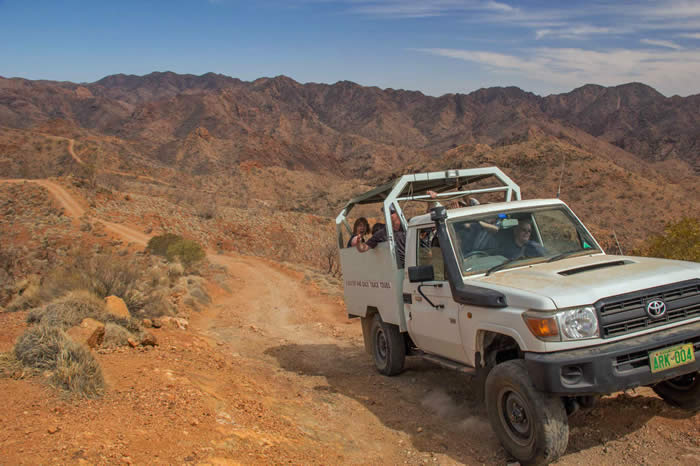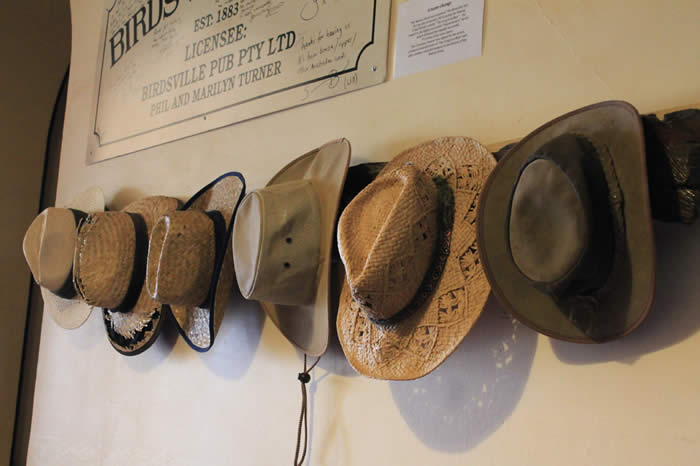
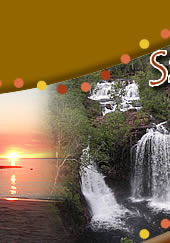
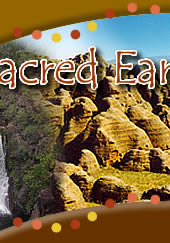
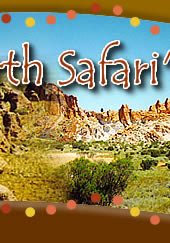
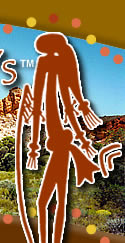
|
|
|
we accept |
|
proud member of  |
|
proud member of  |
|
proud member of  |
|
proud member of 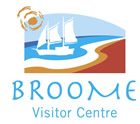 |
|
|
12 Day Outback South Australia Photography Adventure
You will be collected from your Adelaide accommodation at 7am this morning for your 12 day 4WD Photography Safari through the South Australian Outback including the Oodnadatta, Birdsville and Strzelecki tracks. Our destination today is the opal capital of the world, Coober Pedy and it will take us all day to get here. En-route we’ll stop for lunch and have a look at the salt lakes in the region.
Upon arrival into Coober Pedy, we check into our hotel and then after spending the day getting to know each other, we’ll enjoy our first dinner together as a group, in the restaurant. Overnight accommodation- underground motel room with en-suite, Desert Cave Hotel, Coober Pedy (2 night stay) Day 2 (B,L,D) There’s some free time this morning for you to have a wander through the town, visit the Old Timers Mine and Museum, The Umoona opal mine and museum (also home to the “Footsteps in time” fossil display), visit one of the underground churches in the town or have a look around Crocodile Harry's Underground Nest, one of the weirdest dugouts of Coober Pedy and one of most famous in the world due to it’s use in the movie Mad Max Beyond the Thunderdome. After lunch we take a guided tour through a working Opal Mine, where we get an insight of what it means to be an Opal Miner. Late this afternoon, we make our way out of town to the nearb Overnight accommodation- underground motel room with en-suite, Desert Cave Hotel, Coober Pedy Day 3 (B,L,D) This morning we depart Coober Pedy early and head across the Moon Plain to the Painted Desert (Arckaringa Hills). The Moon Plain is rich in fossil deposits, evidence of the inland sea that covered this region 120 million years ago and offers a vast expanse of rocky plains unlike anywhere else. The strange lunar landscape has been used for many Hollywood movies inc We’ll cross the Dog Fence numerous times during the trip but the first time is today on the way to the Breakaways. The longest fence in the world, at 5300km’s, it stretches across 3 states, from Queensland to the far west of South Australia. The Painted Desert is an ancient Inland Sea bed where the hills are the result of rain, weather and erosion. The slopes and shapes include many different colours and shades of orange, yellow and white- hence the name “Painted Desert”. After viewing and photographing the Painted Desert from the lookout, we continue through to Oodnadatta. Famous for it’s pink roadhouse, the town was originally created when the Overland Telegraph Line was laid and then became the northern terminus for the Central Australia Railway. After lunch we join the 615km unsealed Oodnadatta Track, which follows the Old Ghan Railway line and the Overland Telegraph, after it was originally mapped by the explorer, John McDouall Stuart. The track follows an old Aboriginal trading route through semi-desert country with artesian springs and waterholes along the way. The route wasalso used by camel trains in the 1880’s, led by cameleers from Afghanistan, both of whom were especially brought to Australia for the task of hauling goods into Central Australia for use by pioneer settlers. Camels were the only pack animals capable of taking on a six-week journey in often extreme heat, through sandy terrain. When the train line was extended to Alice Springs in 1929, many of these camels were left to run wild in the outback where they number in the tens of thousands today. The line became known as the Central Australian Railway and the train service on the line was known as the Ghan in honour of the Afghan cameleers. The Oodnadatta Track is littered with ruins of old town sites, station ruins, homes, cairns and remnants of the old railway line, the short-lived gold rush and the Overland Telegraph Line. En-route to William Creek, we stop at Algebuckina Bridge historic sit We arrive at William Creek, the smallest settlement in South Australia with a population of 3 humans and a dog ! It’s located 165km’s from the nearest town and sits in the largest cattle station in the world (Anna Creek-approximately the size of England). Overnight accommodation - motel room with en-suite, William Creek Pub Hotel, middle of nowhere, Outback South Australia Day 4 (B,L,D) This morning you have the option of taking a scenic flight over Lake Eyre (own expense). Departing William Creek, we make our way out to Halligan Bay at Lake Eyre North for a look at the magnificent lake with it’s incredible colours and patterns. Lake Eyre is Australia’s lowest point, the largest inland lake in Australia and the largest salt lake in the world ! The Lake contains 400 million tonnes of salt and is 15 metres below sea level. Donald Campbell set a land speed world record of 649 kmh in his turbine car "Bluebird" on its dry bed back in 1964.
After stopping at the Lake Eyre South lookout, we pass the famous dingo fence again and then reach Marree, which is situated at the crossroads of the Oodnadatta and Birdsville Tracks. The town also has a rich Aboriginal, Afghan and European heritage. Overnight accommodation – motel room with en-suite, Marree Pub Hotel Day 5 (B,L,D) Departing Marree, we now travel north on the famous stock route, which is the Birdsville Track. The track passes through the Tirari and Sturt Stony Deserts and is extremely remote but strikingly beautiful in its harshness. The 517km track, which traverses vast gibber strewn plains and sand dunes, was established in the 1860s as the main stock route to bring cattle from central Queensland to the railway in Marree. In these days the track had a grim reputation, many people and mobs of cattle lost their lives, so the Track is rich in history and tragedy. It later became an important as a freight route into the outback and in the 1930’s, it even ha We have a look at the ruins of the Lake Harry Date Plantation and then stop at the Cooper Creek Crossing, before before driving through The Natterannie Sandhills to our accommodation this evening, at the historic Mungerannie Hotel. The hotel is close to the beautiful hills of Mungerannie Gap, which are the largest geographical sight along the Birdsville Track (150m) and the Mungerannie wetlands provides refuge for a variety of birds and animals, especially in times of drought. The hotel also has an artesian hot pool. We have the rest of the afternoon free for bird watching, photography and relaxation. Dinner tonight will be served in the restaurant. Overnight accommodation- Mungerannie Hotel, basic motel room with shared bathrooms Day 6 (B,L,D) Our destination today is Birdsville. En-route we pass Mirra Mitta Bore, a hot flowing artesian bore, and Clifton Hills Station, the largest on the track. The last leg of the track, into Birdsville, takes us past K We arrive into Birdsville at lunchtime and have the afternoon to explore this famous, remote, outback town- visit the Birdsville Working museum, the ruins of the Royal Hotel, the Old Birdsville Courthouse and / or visit the Birdsville Billabong, where you can have a swim (conditions permitting) and bird watch. Birdsville is a haven for bird-watchers with pelicans, water hens, cockatoos, gallahs, brolgas, emus and more living along the pristine Diamantina River and in the surrounding bush. Late this afternoon, we drive out to Big Red, the largest and most famous sand dune in the Simpson Desert. It offers fantastic photo opportunities, especially at sunset. Dinner tonight will be served in the restaurant. Overnight accommodation- Birdsville Hotel, motel room with en-suite Day 7 (B,L,D) We head south again today, through Cattle Country and back into South Australia to Innamincka, made famous by Victorian explorers Burke and Wills and their ill-fated exploration across central Australia. En-route we enjoy the view at Deon's Lookout and visit The Dreamtime Serpent – a work of art representing a series of pathways travelled through Country to connect the river systems in the Channel Country of the Diamantina Shire. The Serpent has been created using gravel and gibbers found throughout the shire. We continue to the tiny outback town of Innamincka, situate
On arrival into Innamincka, we visit the famous Burke and Wills Dig Tree (camp LXV). It was here that the explorers left a base camp while they continued north, along with King and Grey. In charge of the camp, Brahe waited longer than he’d been requested to but his decision to return south only hours before the Burke and Wills party returned, is one of the most unfortunate coincidences in Australian history. Grey died en-route to Innamincka, Burke and Wills died along Cooper Creek and King was the sole survivor, being cared for by Aboriginal people until the back up party found him. Overnight accommodation- motel room with en-suite, Innamincka Pub Hotel Day 8 (B,L,D) We depart Innamincka this morning and head south through the Strzelecki Desert and join the last of our legendary Outback Tracks- the Strzelecki Track. Explorer Charles Sturt named the track after Polish explorer and geologist Paul Edmund de Strzelecki and the 465km track runs north <>south from Lyndhurst to Innamincka.
Our first stop today is the viewpoint at the Moomba oil and gasfields. Natural gas was first discovered in the region in 1966 and was followed by the discovery of oil in 1970. Moomba is now a major supplier of both for Australian and overseas markets. We continue down the Strzelecki Track and turn off towards the Northern Flinders Ranges, heading towards Arkaroola Wilderness Sanctuary. The privately owned sanctuary was founded in 1969 by Reg Sprigg, Biologist, Oceanographer, Conservationist, scientist and pioneer of eco-tourism. Many minerals are found on Arkaroola, including gold, sapphires, rubies, amethyst, several forms of quartz, uraninite and malachite (among others) and evidence of early mining is scattered about Arkaroola and the Gammon Ranges. Arkaroola is also famous for it's clear night skies and offers some of the best viewing conditions in Australia. Overnight accommodation- motel room with en-suite, Arkaroola Wilderness Sanctuary (2 night stay) Day 9 (B,L,D) This morning you’ll take Arkaroola’s famous Ridgetop tour- an unforgettable encounter with the timeless terrain and unique natural beauty of Arkaroola Wilderness Sanctuary. Learn from your Arkaroola guides about Arkaroolas 1600 million year old geological history as they navigate the steep slopes and hair raising ascents of the Ridgetop Track. Inspiring images of red granite mountains and golden spinifex covered hillsides give way to a breath-taking view across the Freeling Heights, Lake From and the desert beyond. Take in the 360 degree panorama as you enjoy morning tea at Sillers Lookout- a lofty pinnacle at the end of the track.
This afternoon is free for you to take one of the local bushwalks, go bird watching (there are over 160 recorded bird species in the Arkaroola area as well as an abundance of native flora and fauna), take a scenic flight or take a tour of an astronomical observatory (the Sanctuary has 3 !). We are happy to pre-book these tours for you or they can be booked on arrival and optional tours are at own expense. Overnight accommodation- motel room with en-suite, Arkaroola Wilderness Sanctuary Day 10 (B,L,D) Departing Arkaroola, we make our way today into the central Flinders Ranges, known for their unique beauty, indigenous history, ancient geological formations, rich colours and textures and abundant wildlife. The Flinders Ranges are home to a huge array of plant species, birds, reptiles and mammals and the vibrant colours of the 800 million-year-old quartzite and limestone outcrop that is the Flinders, are truly spectacular. We continue to Parachilna, another tiny township with a population in single digits ! It’s a favourite among film makers thanks to the beautiful landscape. The road from Beltana to Parachilna runs beside the old railway line, with many remnants of old railway stations, bridges across creeks and straight stretches where the railway used to run. Next we take the Moralana Scenic Drive, passing between the Southern wall of the Pound and the magnificent Elder Range. Part of the Heysen trail, the route runs through Arkaba sheep station, linking main roads from Hawker to Blinman and Parachilna. Midway along the route, we’ll take the turnoff for Black Gap Lookout to enjoy magnificent views of the outer Pound wall and the Red and Elder Ranges to the south. We’ll finish today at the Cazneaux Tree. This magnificent River Red Gum was first made famous by Harold Cazneaux, a photographer who won first prize at an International Photographic Exhibition in 1937 with his photograph of the tree, which he entitled “The Spirit of Endurance”. The tree is an important local landmark in the Flinders Ranges, photographed and painted by many visitors. Overnight accommodation- Wilpena Pound Resort- standard room with en-suite (2 night stay) Day 11 (B,L,D) This morning you have the option of taking a walk into Wilpena Pound or take a scenic flight (at own expense). Walk along the b This afternoon we drive through the ABC and Heysen Ranges to nearby Bunyeroo Gorge and a stop for photos at Razorback Lookout. We finish the day at Stokes Hill Lookout, offering spectacular panoramas of Wilpena Pound, Mt Patawarta, and the Druid, Chace, Elder, Heysen and Bunker Ranges. Overnight accommodation- Wilpena Pound Resort- standard room with en-suite Day 12 (B,L) Departing the Flinders Ranges, we head south towards Hawker, the hub of the Flinders Ranges and a thriving railway town until the line was relocated west in 1956. E We continue to Quorn, home to the famous Pichi Richi Railway and many heritage buildings. The Quandong Café is located in the oldest stone building in Quorn, at 130 years old and is home to the famous Quondong Pie. The last leg of our journey takes us back onto the highway and from here we continue south to Adelaide We arrive in Adelaide at approximately 6pm and you will be dropped off at your accommodation
END ITINERARY B = Breakfast / L = Lunch / D = Dinner This tour is operated as a private tour only (sole use of tour vehicle and driver guide) and can depart on any day, subject to availability and weather and road conditions, between September and April inclusive. The itinerary can be amended to suit your requirements, so please contact us for more information or a quote. Click here for our scheduled tour itineraries Inclusions: • Sole use of 4WD tour vehicle with professional driver guide & purpose built heavy duty trailer • Permits and entry fees • Big Red sunset tour • Opal mine tour at Coober Pedy • Arkaroola Ridgetop tour
Exclusions: • Pre & Post tour accommodation • Arrival / departure flights • Optional extra activities such as Lake Eyre scenic flight Testimonial : David's knowledge of the area and his prodigious memory for facts and figures was amazing. His love for the Outback was self-evident. The vehicle, together with it's windscreen and windows, was always clean and tidy for the days' travel ahead. It was on the heavily corrugated Oodnadatta Track that brought the realisation of the efficiency of the springing system ! While breakfast and dinner were provided at the accommodation, the driver guides lunches at roadside stops, were fresh and most enjoyable. The entire tour took me to fascinating places that i had not visited earlier. David's information on the geology and history was most welcome, as was his humour. There were many highlights which filled my "bucket list". The tour operators are to be commended for the planning, safety of guests and conduct of the tour. Keith, Outback South Australia photo tour, Sept 2019
|


 Coober Pedy is as famous for it’s underground homes as it is for it’s opals and 50% of the population live underground (in homes called “dugouts”), as well as using underground shops and churches.
Coober Pedy is as famous for it’s underground homes as it is for it’s opals and 50% of the population live underground (in homes called “dugouts”), as well as using underground shops and churches. 